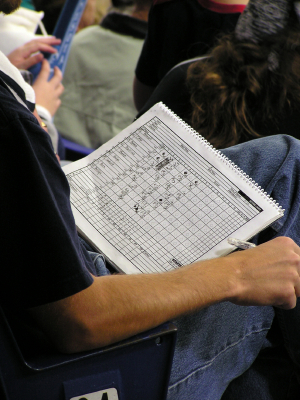We have some friends who used to own and operate a wine shop. We hadn’t seen them in a while so they had us over for (what else!) some wine, food, and conversation. It was the perfect summer evening to sit outside and enjoy catching up with one another, sampling some good wine, and enjoying some fantastic food.

But another highlight of the evening was our friends’ son, Max. Max is 2 1/2 years old. Max entertained himself for most of the more than four hours we were with our friends. Max is creative.
One of the top ways people end up on my blog is by doing a search of the phrase “creative kids.” I love to observe creativity in kids and encourage creativity in kids. Max reminded me again that creativity begins at a very, very early age.
Max is all boy. He loves trucks, cars, and smashing things. One of his favorite things to do is take a shovel, a bucket, and his dump truck to the back of the yard and dig for worms. He uses the resources he has to create some fun for himself.
So, dig he did. Max probably spent twenty minutes digging in the back of the yard before he found a worm. And when he did he triumphantly came over to the table where the adults were talking, dug into the pile of dirt in his dump truck, and pulled out the tiniest little worm I’ve ever seen. We all decided that he should name the worm Willie, and he did.
Willie was washed with water. Willie was presented to each person at the table. Willie went to jail in Max’s toy police station. And Willie went back into the dirt. Then Max was off to dig for more worms.
Sure enough, this time Max came back with a bigger worm. This one was named Wanda. With a little adult prompting, Max decided that he could go fishing with Wanda.
More worms. More play. More creativity.
Max’s persistence at play reminded me that sometimes that’s just what I need: to be a little more persistent in my “play.”
- When I start a creative project I need to allow myself more time for exploration and play. Far too often I find myself rushing the creative process. The creative process is more often a slow cooker than it is a flash in the pan.
- When I’m in the midst of a creative project I need to somehow involve others in the process. The adults helped Max name the worm Willie. It’s a reminder that in creativity two (or more!) minds are better than one.
- When I’m creating something it is sometimes best to use resources that are readily available. Max used his shovel, bucket, and dump truck. Sometimes I spend more time looking for resources to help me create, than in the actual process of creating. Looking right in front of me for resources is a great place to start.
- When time is short and creating becomes a burden, I limit myself by only “skimming the surface” of my thoughts or resources. Max spent time digging. I need to dig more. When I do, I will be certain to find more worms.
And in the end…a little wine with friends doesn’t hurt, either.
What lessons in creativity have you learned from children?









